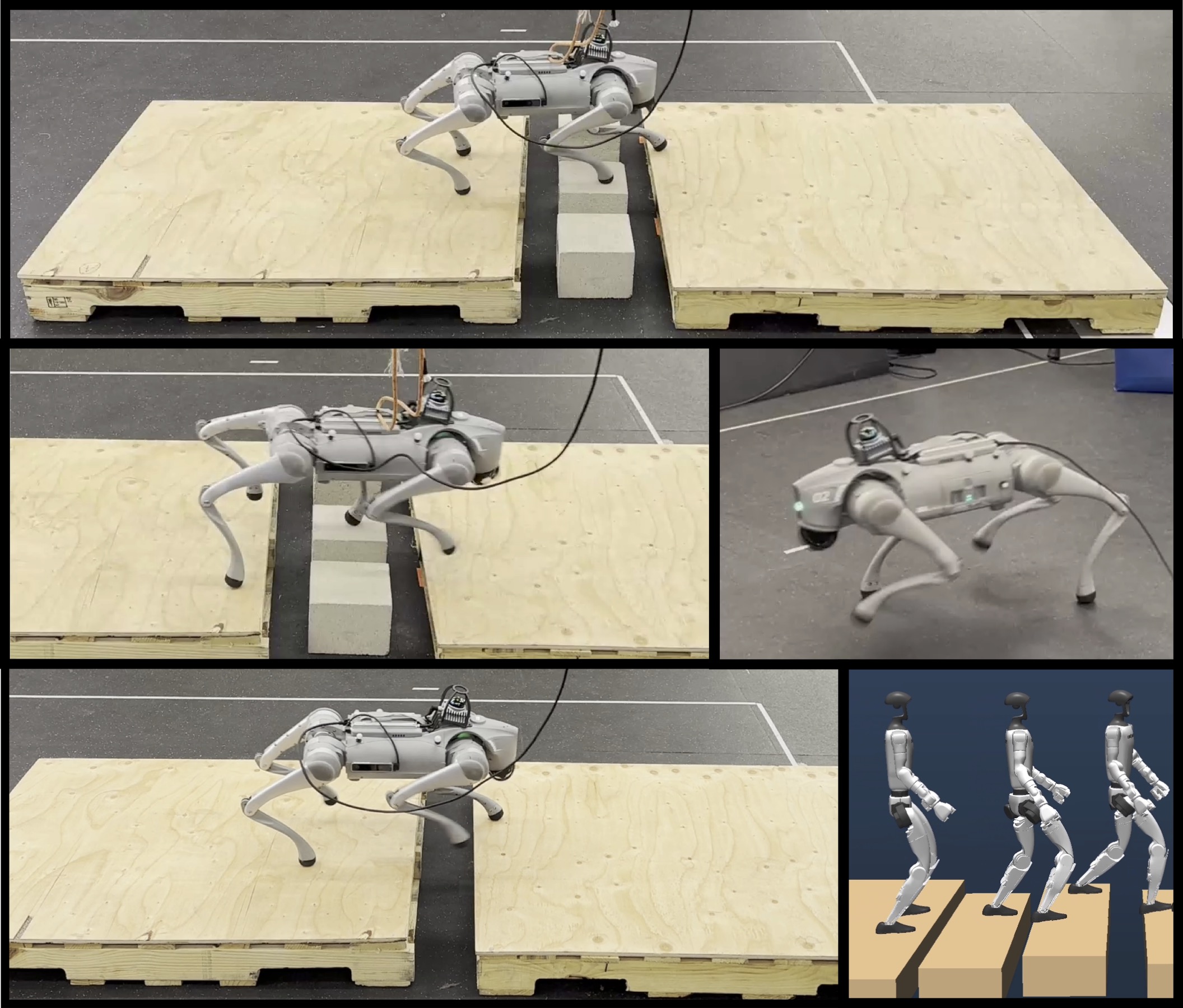Locomotion on Constrained Footholds via Layered Architectures and Model Predictive Control
Abstract
Computing stabilizing and optimal control actions for legged locomotion in real time is difficult due to the nonlinear, hybrid, and high dimensional nature of these robots. The hybrid nature of the system introduces a combination of discrete and continuous variables which causes issues for numerical optimal control. To address these challenges, we propose a layered architecture that separates the choice of discrete variables and a smooth Model Predictive Controller (MPC). The layered formulation allows for online flexibility and optimality without sacrificing real-time performance through a combination of gradient-free and gradient-based methods. The architecture leverages a sampling-based method for determining discrete variables, and a classical smooth MPC formulation using these fixed discrete variables. We demonstrate the results on a quadrupedal robot stepping over gaps and onto terrain with varying heights. In simulation, we demonstrate the controller on a humanoid robot for gap traversal. The layered approach is shown to be more optimal and reliable than common heuristic-based approaches and faster to compute than pure sampling methods.
Video
Pictures

Additional Info
Authors: Zachary Olkin, Aaron Ames
Conference: Humanoids 2025
Location of work: Amber Lab, Caltech
Dates of work: September 2024 - April 2025
Paper: arxiv
Github repo 1, Github repo 2. The second repo (TORC) has the MPC code as a library and the first repo is the code that actually runs the simulation and hardware.